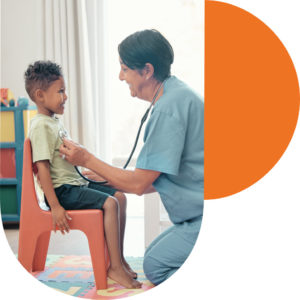Our plan sets out how health and care services in Lambeth will work together to improve health and wellbeing outcomes over the next five years.
Our plan
- focuses on supporting people to lead healthy lives, improving prevention and early intervention, and making sure that people have access to and positive experiences of health and care services that they trust and meet their needs. We know that the key to this will be delivering in different ways, supported by a positive and action-focused approach to equity for all protected characteristics including taking an anti-racist approach, to build trust and confidence with our communities
- is ambitious; we know we can do better by working together to transform how we work, to deliver for our patients and residents
- supports developing our ability to become more research active and embed a culture of evidence-based decision making, led by our communities, through the Lambeth HEART programme, to use research and evidence to understand and act on the causes of health inequalities in Lambeth
- responds to the priorities developed by residents and communities as set out in the Lambeth Health and Wellbeing Strategy and the Lambeth Borough Plan and is aligned with the South East London Integrated Care System Strategic Priorities
- sets out our aspirations for the borough, our residents, and patients and those who care for them, including what
we want to happen, change or improve (our outcomes), the principles of how we will work, what we need to
deliver the plan and how we will know if we are making a difference.


This is a five year plan with an annual action plan.
This is just the start, and we intend to evaluate, learn, reflect, and refine as we go. As a partnership, we will report on our progress against our action plan at every meeting in public of the Lambeth Together Care Partnership Board (every two months).
We will review our plan every year, by reflecting on our activities and impact, and asking ourselves:
- Is this working? Can we do more? Do we need to change course?
- We have delivered what we said we would, what’s next?
- We have met that target, should we aim higher?
- We have different data now so should we review
this measure or target? - What are patients and residents telling us?
- What lessons have we learned?
- What is research evidence telling us about the
causes of health inequalities in Lambeth and how
can we impact these?
Vital 5
The Vital 5 are five factors that have a major impact on health at an individual and population level. These are
- blood pressure
- obesity
- mental health
- smoking status
- alcohol intake
We know that focusing on prevention and early detection in these five areas is an effective way of improving outcomes for our population.
Our plan has included the Vital 5 throughout as we know that identifying, recording, and sharing the Vital 5 data between all health partners and our patients, and acting on the results across our population, would make the biggest difference to people’s health and to the sustainability of health and social care.
(Credit King’s Health Partners https://www.kingshealthpartners.org/our-work/value/vital-5)

The Seven
NHS England has set out five clinical areas that need rapid improvement, in order to tackle health inequalities. These are
- 1. Continuity of midwifery care for women from Black, Asian and minority ethnic communities and from the most deprived groups
- 2. Ensuring annual health checks for 60% of those living with severe mental illness
- 3. Driving up uptake of COVID, flu and pneumonia vaccines
- 4. Early cancer diagnosis
- 5. Identifying high-blood pressure
In Lambeth, we have identified two further clinical areas that need rapid improvement in order to tackle health inequalities, based on our local population. These are:
- 6. Chronic pain
- 7. Diabetes